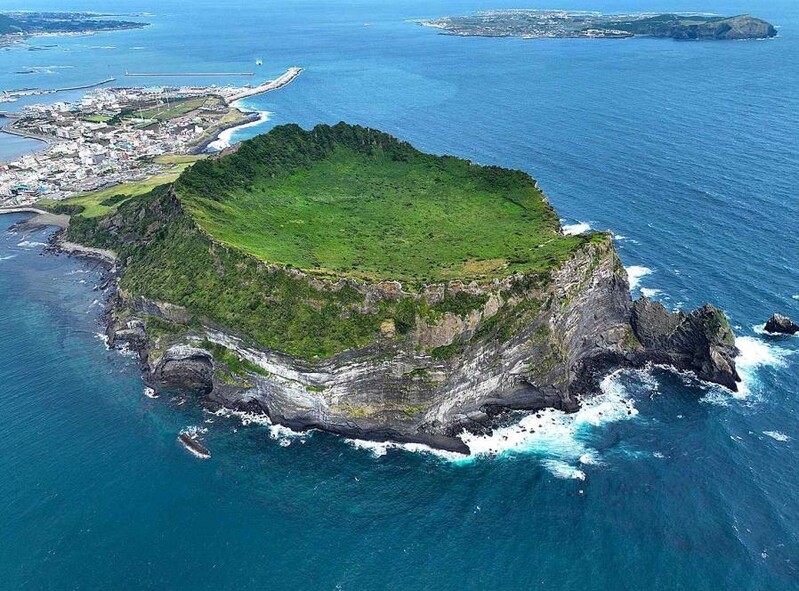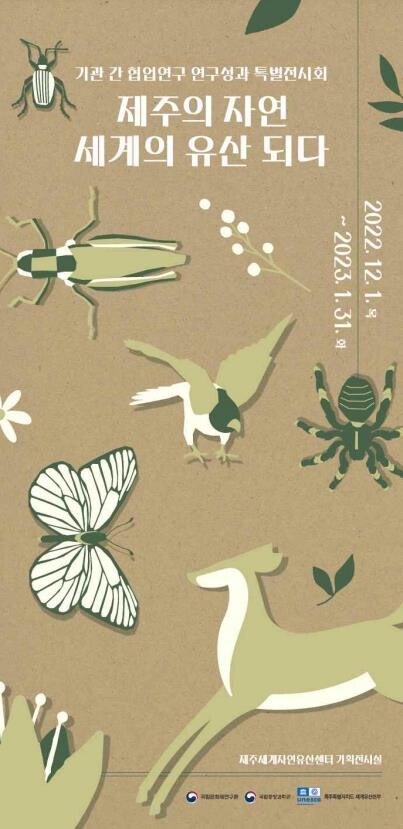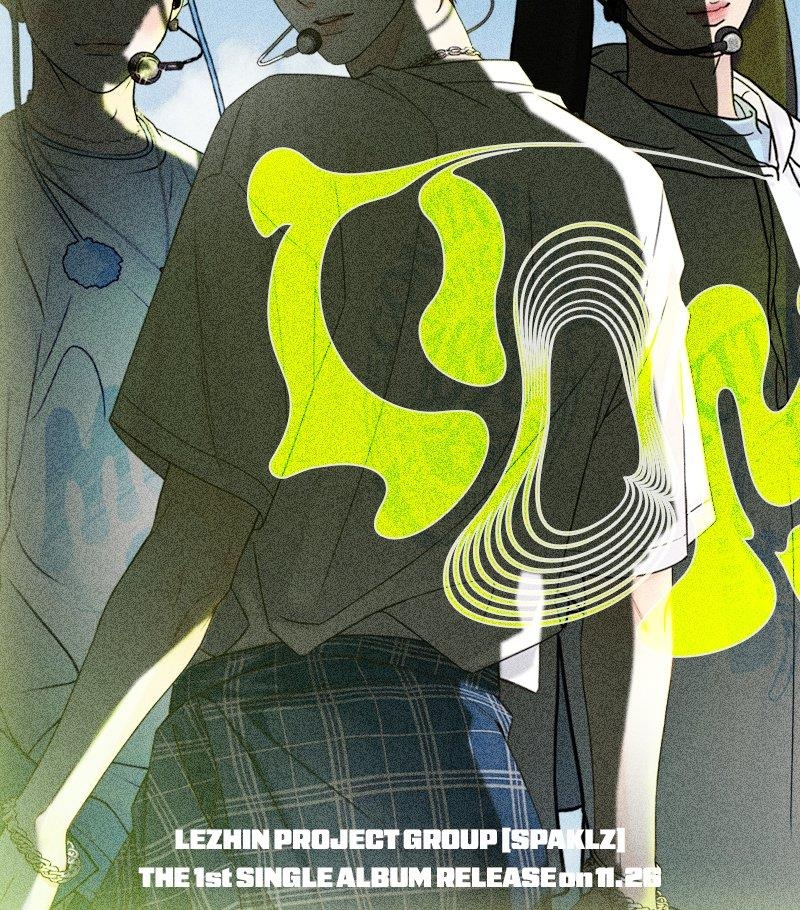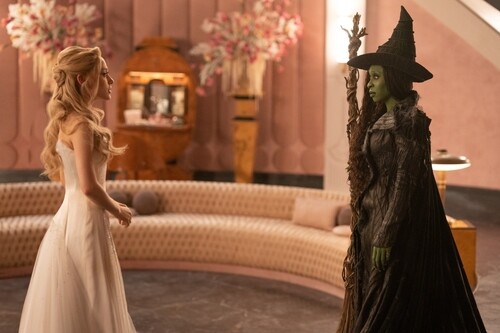 |
| ▲This photo, provided by National Research Institute of Cultural Heritage, shows protected area of Jeju Seongsan Ilchulbong. (PHOTO NOT FOR SALE) (Yonhap) |
 |
| ▲This photo, provided by National Research Institute of Cultural Heritage, shows poster for exhibition. (PHOTO NOT FOR SALE) (Yonhap) |
SEOUL, Nov. 29 (Yonhap) -- Exhibition in which nature of Seogwipo, such as natural monument black pigeon and Chejuanomala quelparta, can be felt will take place.
The National Institute of Cultural Heritage announced on Tuesday that it will hold an exhibition titled "Jeju's Nature Becomes a World Heritage Site" (literal translation) at the Jeju World Natural Heritage Center from December 1 with the National Science Museum and Jeju World Natural Heritage Center.
12 organizations, including the institute, will reveal the results of their research on biological classifications in various parts of Jeju, including Seongsan Ilchulbong Natural Reserve, Pyeongdae-ri Visa Tree Forest and Andeok Valley, from 2019 to this year.
More than 300 samples, photos and videos of as well as mammals (rose deer, weasel, etc.)including black pigeons, black cranes, and eagles designated as natural monuments, and insects (Jeju beetles, Hallasan silkworm moths, etc.) will he exhibited.
Plants such as Cleisostoma and judo hydrangea that boast their beauty can also be seen.
It is noteworthy that the research has newly discovered the habitat of the tropical fish, Giant Mottled Eel
An official from the institute explained, "It has been known that Giant Mottled Eel only live in Cheonjiyeon and Cheonjeyeon Falls, but according to the reasearch, it was confirmed for the first time that they also live in famous place, Jeongbang Falls."
The exhibition will take place until January 31 next year.
(This article is translated from Korean to English by Jiwon Woo.)
(END)
(C) Yonhap News Agency. All Rights Reserved























